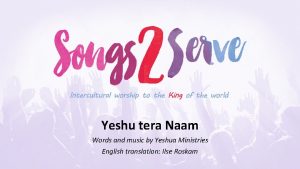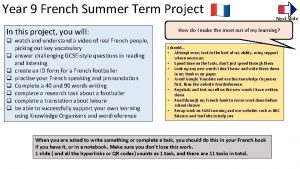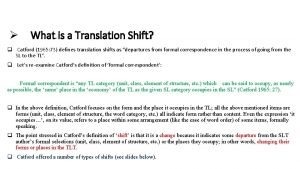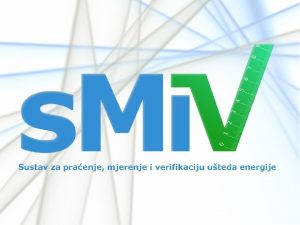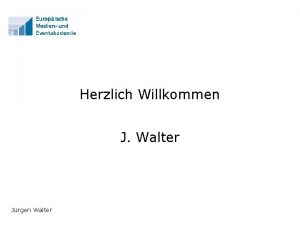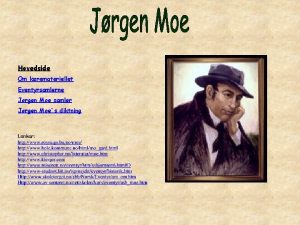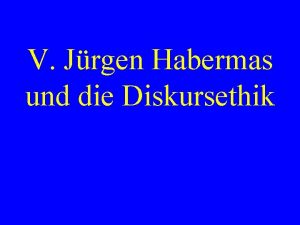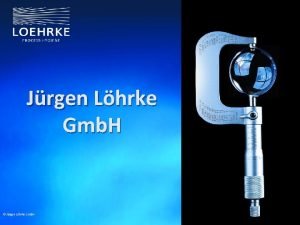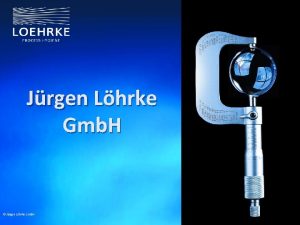SMIv 2 Translation to YANG draftschoenwnetmodsmiyang02 Jrgen Schnwlder


![Issue #1: DISPLAY-HINTs – […] the DISPLAY-HINT value MAY be used to generate a Issue #1: DISPLAY-HINTs – […] the DISPLAY-HINT value MAY be used to generate a](https://slidetodoc.com/presentation_image_h2/e673b57ad890afc3054324e7c0b6b01d/image-3.jpg)





- Slides: 8

SMIv 2 Translation to YANG draft-schoenw-netmod-smi-yang-02 Jürgen Schönwälder Jacobs University 2011 -03 -29 IETF 80 - NETMOD WG MEETING 1

Changes since draft-schoenwnetmod-smi-yang-01 • Inlined examples again (avoids page flipping) • Preserving the SMIv 2 nesting instead of flattening things (see discussion in Beijing) • Wrote some security considerations text • Clarifications and editorial improvements 2011 -03 -29 IETF 80 - NETMOD WG MEETING 2
![Issue 1 DISPLAYHINTs the DISPLAYHINT value MAY be used to generate a Issue #1: DISPLAY-HINTs – […] the DISPLAY-HINT value MAY be used to generate a](https://slidetodoc.com/presentation_image_h2/e673b57ad890afc3054324e7c0b6b01d/image-3.jpg)
Issue #1: DISPLAY-HINTs – […] the DISPLAY-HINT value MAY be used to generate a regular expression for the YANG pattern statement within the type statement. • Options: – Declare this text to be sufficient – Elaborate how certain simple DISPLAY-HINTs can be translated, leaving the translation of more complex ones an implementation choice – Define a complete translation algorithm (hard, output usually not readable) – Declare that DISPLAY-HINTs are not translated at all 2011 -03 -29 IETF 80 - NETMOD WG MEETING 3

Issue #2: Name Ambiguities foo OBJECT IDENTIFIER : : = { baz 1 } bar OBJECT IDENTIFIER : : = { baz 1 } • Options: – First definition encountered in a translation unit wins and declare certain valid SMIv 2 updates to be avoided – Drop the idea to generate a hierarchy of nested containers (again) and instead merge all scalars into one container (name from MODULE-IDENTITY) followed by the tables –? 2011 -03 -29 IETF 80 - NETMOD WG MEETING 4

Issue #3: Enum/Bits Ambiguities – SMIv 2 allows the descriptors of enumerated integers and named bits to change during revisions – YANG does not allow enums to be changed • Options: – declare certain valid SMIv 2 updates to be avoided – ? ? 2011 -03 -29 IETF 80 - NETMOD WG MEETING 5

Issue #4: OBJECT-IDENTITY container usm. No. Auth. Protocol { description "No Authentication Protocol. "; } identity usm. No. Auth. Protocol { base "smiv 2: object-identity”; description “No Authentication Protocol. "; } • Options: – Translate OBJECT-IDENTITIES into YANG containers? – Translate OBJECT-IDENTITIES into YANG identities? – Do both or do nothing? 2011 -03 -29 IETF 80 - NETMOD WG MEETING 6

Issue #5: string vs binary – Presence of a DISPLAY-HINT is used to decide whether an OCTET STRING translates to a string or binary type – SMIv 2 allows to add DISPLAY-HINTs during revisions, hence this is not safe • Options: – Use a union type to always allow textual strings and binary values; requires to “quote” string values in some way to avoid ambiguities – Always use the binary type (encoded in base 64) – declare certain valid SMIv 2 updates to be avoided – ? ? 2011 -03 -29 IETF 80 - NETMOD WG MEETING 7

Issue #6: smiv 2 yang extensions – YANG extension statements (smiv 2: oid, smiv 2: display-hint, smiv 2: max-access, smiv 2: defval) are defined to keep SMIv 2 information not directly translatable in a machine readable format • Options: – Implementations MUST generate these statements – Implementations SHOULD generate these statements 2011 -03 -29 IETF 80 - NETMOD WG MEETING 8




